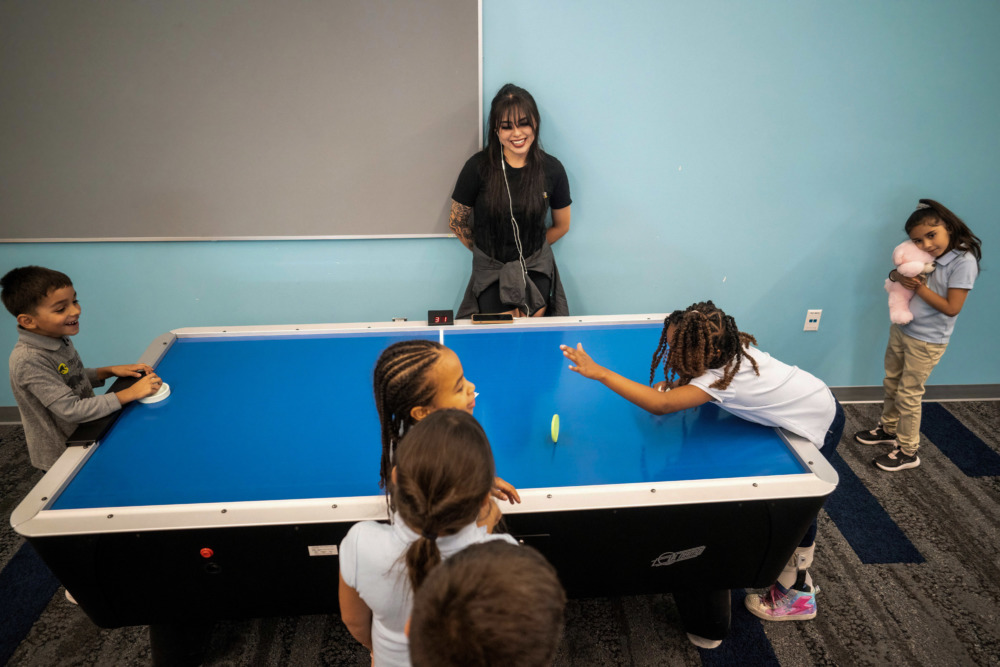 Cristin Chavez-Smith, a manager with the city of Albuquerque, is preparing to welcome over 1,000 young people ages 14 to 24 to work this summer as lifeguards, recreation leaders and office interns.
Cristin Chavez-Smith, a manager with the city of Albuquerque, is preparing to welcome over 1,000 young people ages 14 to 24 to work this summer as lifeguards, recreation leaders and office interns.
While she’s hoping this summer’s youth employment program will be as vibrant as it was before Covid-19 cast its shadow across the country, the city is struggling to remain competitive with local businesses, many of whom have boosted wages in response to a nationwide worker shortage.
“I won’t lie and say it’s been easy, because our industry has been hit just as hard as every other industry with hiring,” said Chavez-Smith, who oversees recreation and education initiatives for the city. “We have to sell our experience more as, ‘This is a really fun job.’”
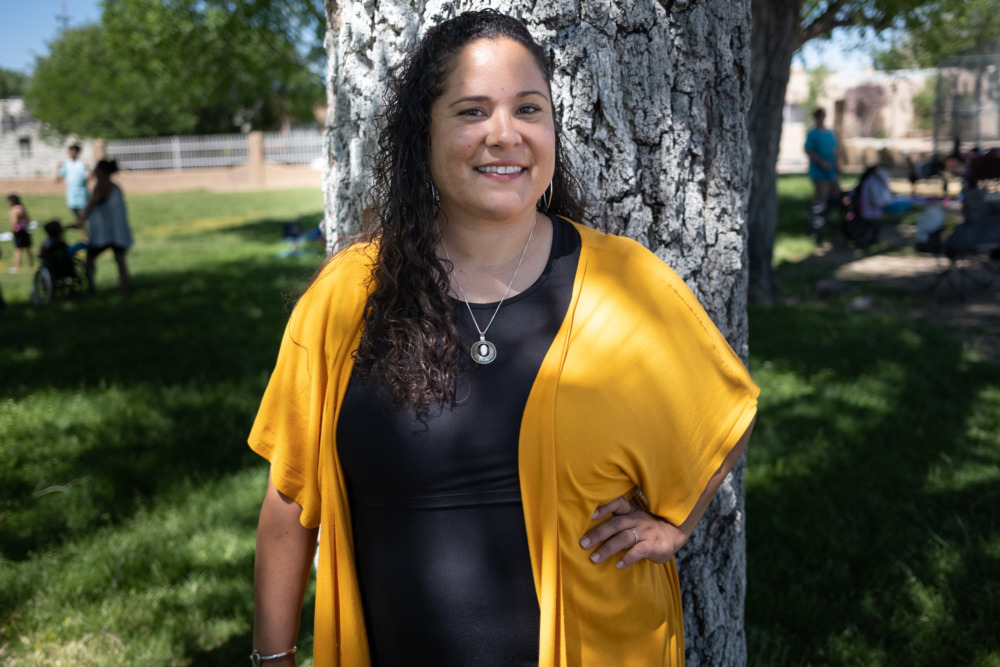
Ramsay de Give
Cristin Chavez-Smith photographed at the Wells Park Community Center in Albuquerque, N.M., on May 26, 2022.
Summer of 2022 is shaping up to be one of economic opportunity for millions of young people, from teens looking for summer jobs to recent college graduates and young adults seeking entry level positions in a new career.
Despite recent upticks of Covid-19 cases in some regions, mask mandates, vaccination rules and other restrictions have largely been dismissed. At the same time, employers are increasing wages and flexibility to lure workers in a tight labor market.
Paul Harrington, director of the Center for Labor Markets and Policy at Drexel University, predicted this summer’s job prospects for young people will be “outstanding.” He cautioned, however, that the likelihood of a recession in the next year is increasing, based on inflation, interest rates and the stock market.
“Get that summer job and save your money,” he advised youth. “And hold onto that job like grim death.”
The center recently released its annual Summer Job Outlook for American Teens, which projects employment among 16 to 19-year-olds to hit 32.8%, its highest level since the Great Recession of 2008 but still well below the youth employment peak of 45% in 2000. The report did not address young adults in the 20-24 age range, but Harrington said he expected similarly rosy prospects.
Youth employment consistently rose from the second world war to the end of the 20th century and has fallen since, a trend Harrington attributes to several factors including an increased cultural emphasis on academics to the exclusion of work experience. He also pointed to wide variation in youth employment between states based on regulations and work culture.
“I would like to see much higher employment rates than what we’re getting,” said Harrington, adding that work experience at a young age is correlated with positive outcomes later in life, including better education and employment, and higher wages and wealth.
TIGHT LABOR MARKET DRIVES WAGE INCREASES
Austin Brandt, 20, a rising junior at the University of Georgia in Athens, is among the young workers taking advantage of a favorable job market.
This summer, he’ll be staying in the college town working full time for a university-affiliated catering company. He has also landed a weekend job at Ben and Jerry’s ice cream and plans to save as much as he can for rent in an off-campus apartment.
Both the catering company and Ben and Jerry’s recently increased pay. Brandt said he avoided applying to at least one restaurant because he heard the management was “a little on the sketchy side.”
“They’re really, really trying to attract people in general, but, you know, younger people to these jobs,” Brandt said. “I do enjoy working because it gives me a sense of purpose.”
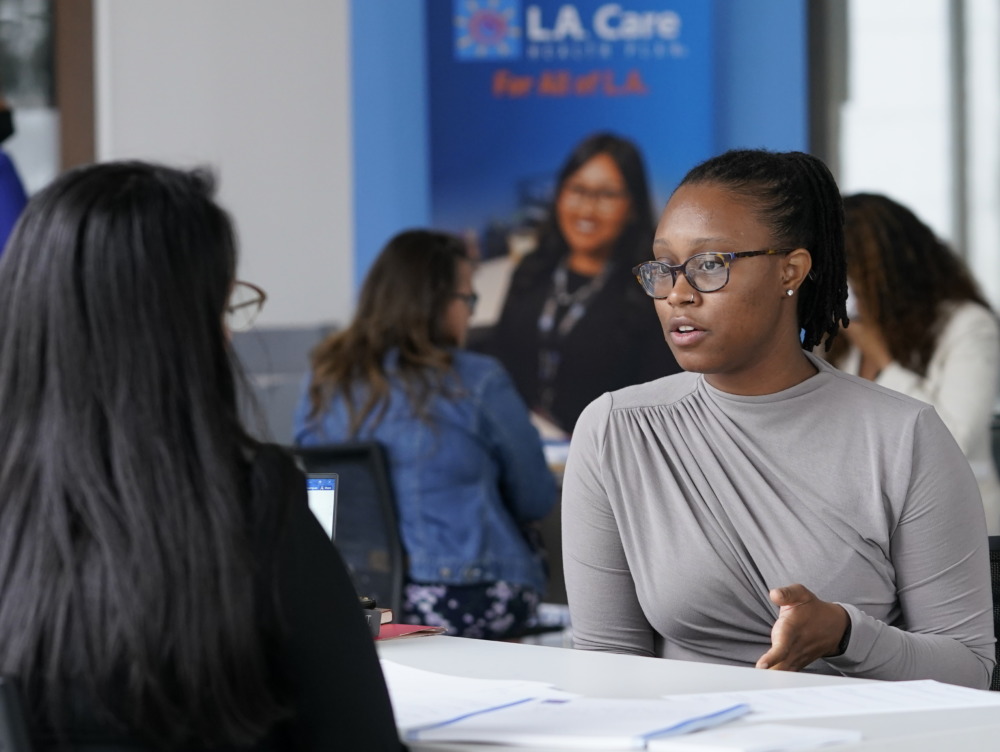
Damian Dovarganes/AP Photo
Job candidate Maya Williams, right, is interviewed for a health care customer service position at the L.A. Care Health Plan job fair at the company’s office in downtown Los Angeles on Saturday, May 21, 2022.
Job placement programs that work with young people have taken note of recent trends in the industries that have traditionally employed the bulk of this group. Leisure and hospitality, including food service; retail; and educational, healthcare or social services together employed three-quarters of teens who worked over the summer of 2021, according to the Summer Job Outlook report.
“The demand for new workers for jobs decimated by the pandemic has driven significant wage increases for a lot of entry-level jobs that would have otherwise been minimum wage,” said Adriane Armstrong, CEO of Juma Ventures, a San Francisco-based nonprofit organization that supports, trains and employs low income and foster youth in entertainment venues.
The hospitality and retail industries in particular offer young people looking for their first job a great opportunity to get hired and lay a track record of employment, she said.
Michigan’s Adventure, an amusement and water park in Muskegon County, is among the private sector businesses that have had to make changes in order to return to its pre-pandemic level of service.
Following two summers of restricted hours and capacity, the park is slated to open every day this summer and is looking to hire upwards of 1,300 employees, many of whom are high schoolers.
For those over 18, and 16-year-olds hired in food service, retail and lifeguarding, the starting wage is $16.50 an hour, a $5 increase over 2020 and $1.50 more than last year. Michigan’s minimum wage is $9.87 per hour.
“That’s not something we’ve ever done before,” Laure Bollenbach, a spokesperson for Michigan’s Adventure, said about the company’s jump in hourly wages. “We want to offer an attractive wage out in the community because everyone’s hiring.”
In Albuquerque, Chavez-Smith said the city doesn’t have the budget to pay young people more than minimum wage — $11.50 in New Mexico.
Meanwhile, most of the employers it competes with for summer labor, such as pizza and fast food restaurants, amusement parks and retailers have upped wages. Hobby Lobby, a national arts and crafts retail chain with locations in Albuquerque, recently raised its minimum starting wage to $18.50 an hour.
CONNECTING YOUTH WITH JOBS
Not all young people have equal opportunity or presence in the job market. According to Harrington’s research, teens from low-income families are less likely to work than those from higher-earning families.
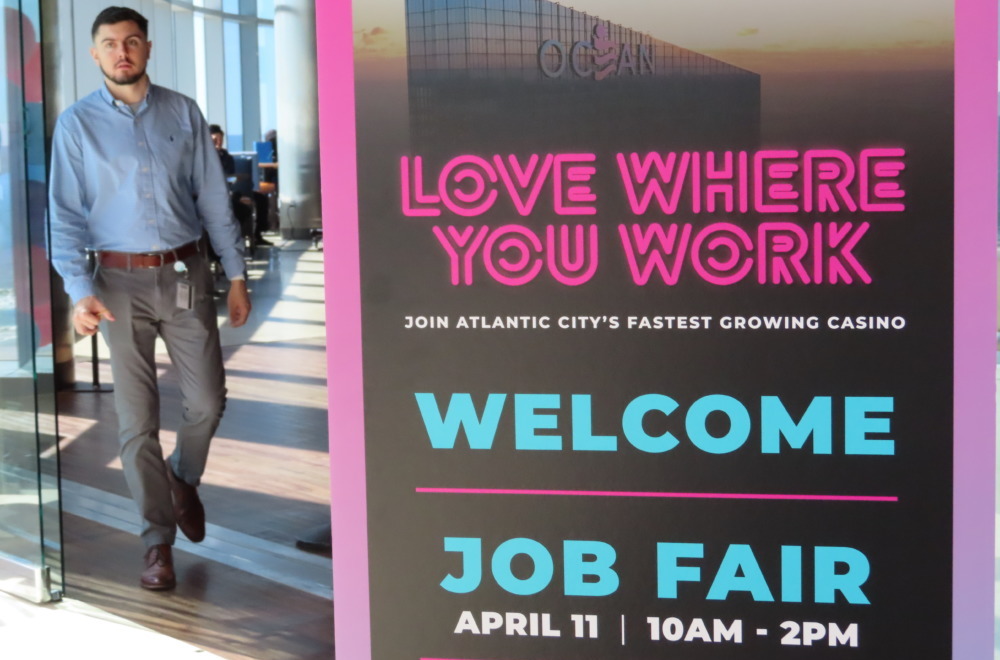
Wayne Parry/AP
Bryan O’Connor, a social media coordinator for the Ocean Casino Resort in Atlantic City N.J., walks through a door during a job fair the casino held on April 11, 2022.
Armstrong, who works with vulnerable youth, pointed out that the pandemic caused many employers to pause or shut down internship programs, and while some have restarted, they remain highly competitive.
Transportation to and from work can also be a problem, she said. In some cities, public transit routes and frequency were cut during the pandemic and have not been restored, and driving is getting more expensive with gas prices at record highs.
But Harrington said the remedy is simple and many programs are quite successful at placing low income and vulnerable youth in jobs.
“It’s not hard, you just have to help them,” said Harrington. “The labor market is a social institution, right? It’s just kind of getting hooked up and someone helping you get in there.”
Workforce Connection of Central New Mexico is one of many public bodies nationwide that support youth employment with classes on resume writing and interviewing skills, as well as assistance with transportation costs, childcare and money for college.
This summer, Workforce Connection is also launching a new program to place young people with employers who will pay them $14 an hour — an increase over previous years’ wages — and provide mentoring.
“Everything is reopened and we are seeing some relaxation of public health orders, so it seemed like a really great thing to launch the summer work academy to get people engaged back into employment,” said Joy J. Forehand, the organization’s operations manager.
CHANGING LIVES
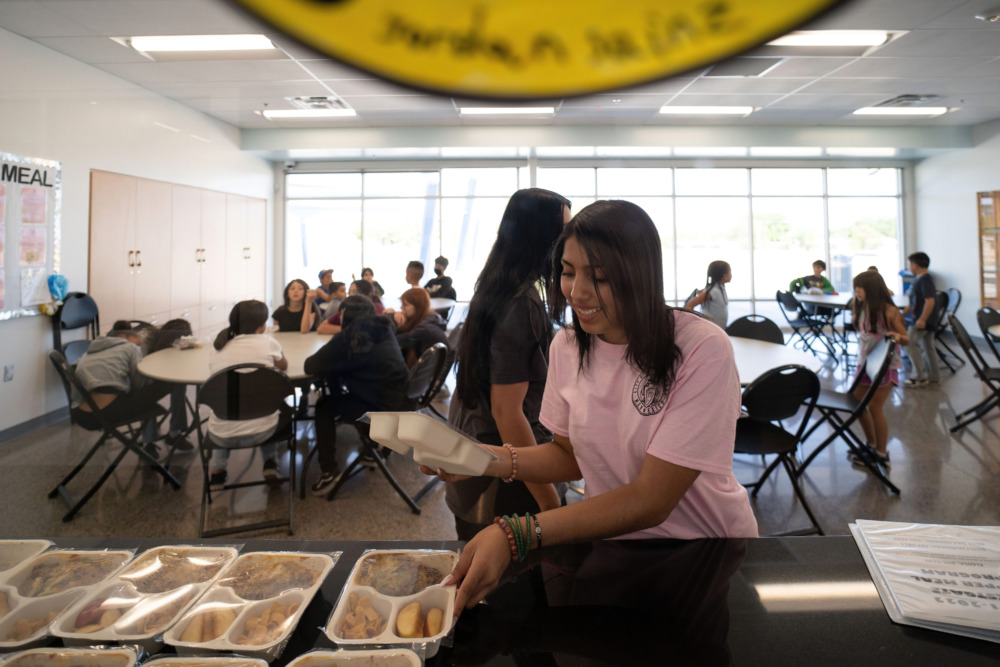
Ramsay de Give
Staff member Priscilla Acosta preps a meal for students at Westgate Community Center in Albuquerque, N.M.
Advocates and experts agree that work experience fosters independence and vital social skills among youth, especially those entering their first job.
“It’s really your first foray into adult life where you’re on the hook for your own behavior,” said Harrington.
Chavez-Smith, with the city of Albuquerque, said it’s important to impart to the young people who come work for the city that they have the capacity to “change lives,” especially those who will work with younger children at the city’s recreation centers.
She speaks from personal experience. Chavez-Smith recounted how, ten years after she tutored kids in reading at a community center, a mother of one of the students tracked her down and invited her to the child’s high school graduation.
“We’ve never forgotten what you did for us and for our kid,” Chavez-Smith recalls the mother saying. “He was able to finish school because he learned to read back at that community center.”
Chavez-Smith tells that story to a fresh group of young workers every summer.
***
Brian Rinker is a San Francisco-based freelance writer and journalist. He covers public health, child welfare, digital health, startups, and venture capital. His work has been published by Kaiser Health News, Health Affairs, The Atlantic, Men’s Health, and San Francisco Business Times. Brian received master’s degrees in journalism and public health from UC Berkeley.


